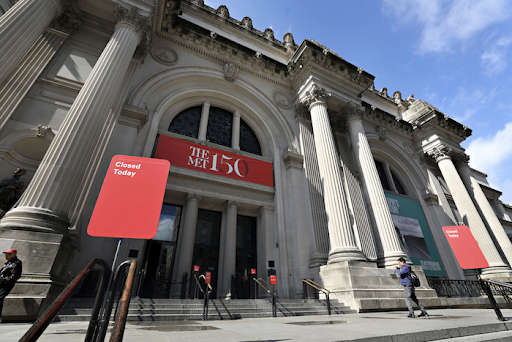When the COVID-19 pandemic hit, the world had to adjust to new norms, and the art world was no exception. The pandemic changed everything for the arts: art fairs went virtual, museums and galleries closed, and many artists had to move their studios home and their presence online. Artists and art institutions across the board have encountered major changes in their lives and careers since early March when the pandemic hit the U.S.

Americans for the Arts has estimated that arts organizations have already lost over $5 billion since the start of the pandemic. Even major museums, like the Museum of Modern Art and the Hammer Museum in Los Angeles, have had to lay off hundreds of workers, many of whom already struggled to balance small paychecks intended to supplement their art. Art galleries have also had to downsize during shelter-in-place, some barely scraping by, while many closed their doors, pushing employees and artists into precarious situations. While global responses differ, the consequences often come down to location. American museums rely on commercial activity, whereas European museums receive government support. Thus, many small American museums, galleries, and alternative art spaces have closed during this time. Canada’s museum funding structure differs, with the biggest public arts fundraiser being the Canada Council for the Arts, a Crown Corporation. Canadian museum directors have been working to prioritize artists and keep museums accessible, but face similar challenges of decreased membership and safety concerns.
As a result, museums, galleries, and artists are all looking towards the internet to preserve them. National shelter-in-place orders mean online activity has skyrocketed. Online gallery sites such as artsy.net have seen a significant increase in activity since April as more galleries are now joining the virtual art world. Artsy CEO Mike Steib thinks the pandemic gave the art world the push it needed to jump on the online digital bandwagon. In past years, a slow but growing number of art organizations have been moving towards virtual programming, but now it seems nearly all galleries are jumping onboard to survive. From the Frieze Fair New York, Art Basel to the Singapore Biennale, art shows are turning virtual, giving collectors as close to normal an experience as possible to buy art.
Of course, nothing truly compares to seeing a work of art in person, mingling with other gallery-goers, or meeting the artist during an opening. And, for those artists who are still emerging and not yet represented by galleries, the hit of the pandemic has been much worse. Those who might benefit from Open Studio programs now cannot house many visitors, nor can they network at openings and events, and on top of that, the job loss for artists has been huge. Teaching art gigs, art-handler jobs, museum roles, and gallery attendant positions, as well as service jobs, which many artists have to supplement their work, have come to a halt. According to a recently published survey by Americans for the Arts, 95 percent of art workers in the US have lost income due to the current crisis—with 62 percent now out of work (wsws.org). These artists must adjust to the new normal while trying to stay afloat in expensive cities like Los Angeles and New York City, where major art markets live. They too are looking to the internet for some salvation. Teaching online, creating workshops, and promoting through social media platforms, websites, newsletters and email blasts are all solutions, but do not completely bridge the wage gap. Artist Lavaughan Jenkins from Boston is spending more time at home and conducting Zoom lectures. Many of his workshops and shows were cancelled, and he’s had less energy to create, but he’s still pushing to make things happen even if he’s much less productive than prior to the beginning of the pandemic. Artists have been staying true to form and getting creative, with Instagram live painting demos, and interviews to try and engage with their audience over the phone.
In Canada, artists face a similar collection of struggles. A 2019 report cited over 158,000 working artists in Canada, and almost three-quarters of a million Canadians involved in the art and culture sector. The majority of Canadian artists are in need of some form of financial assistance to stay afloat during the pandemic, with job losses skyrocketing in all mediums. Furthermore, many artists, both musical and video, operate on a “gig economy” business plan, making income from their commissions and requested work. With economic closures and conservative spending by the majority of Canadians, these opportunities have decreased significantly. In response, the Canadian Council for the Arts plans to push forward nearly $60 million in grants to aid struggling artists. However, many artists fear that they will be impacted beyond the short-term timeline of aid, and are turning towards alternative methods of exposure. Social media plays the most prominent role in these efforts, and many artists are producing much more content for virtual audiences.
Despite the struggles at hand, artists are continuing to make art, even if they must adjust to smaller spaces in their apartments and galleries restrained to their computer screen. Despite these obstacles, artists will persist and continue to make art no matter the circumstances, and prove they are flexible and resilient amidst the changing world. Songwriter Nina Simone’s words continue to ring true: “It's an artist's duty to reflect the times in which we live.” And, as such, artists are responding in how they work, where they work, and even in how they’re connecting to the rest of the art world.
